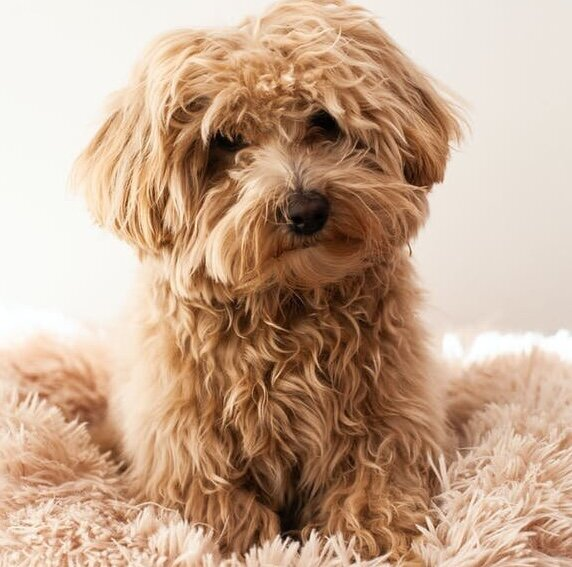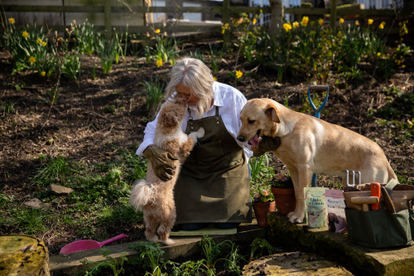How often should we groom our dog?

Grooming expert Jitka is dog mum to 5 mischievous terriers and has been in the pet industry for over 30 years. She has won numerous international dog grooming competitions, represented England and was placed at the World Team Championship, winning Dog Grooming Salon of the Year award. You can check out her natural aromatherapy products at https://vitacanis.co.uk
She has very kindly taken the time to give our pupstomers some grooming advice - thank you Jitka!
How often should I groom my dog?
This is a question people should ask themselves before they get a dog. Because there is not a simple answer like 5 minutes every day, once a week, once a month, every six months...
And it's not just time but also the expenses associated with grooming.
First of all, we have to understand each coat type requires
Short and smooth coat
Easy peasy lemon squeezy, you may say. Yes, it's easier to look after a Whippet's or Staffie's smooth coat than, let's say, a poodle, but they do still moult. You'll find tiny hairs stuck on your socks, on your clothes, in your carpet, and they aren't that easy to get rid of either.
Regular bathing and brushing with a rubber brush can help and eliminate the amount of hair. Unless you can't bathe your dog at home or/ and clip his nails and clean his ears, regular visits to the groomers are not necessary.
Wool Coat
This coat can be low maintenance when kept short. We don't see many Poodles and Bichons in full coat, do we? Unless they are show dogs, most of the owners like to keep the coat short. A wool coat is very thick and curly and has a lot of volume. It requires a lot of regular grooming, even daily, because it matts very easily and can grow quite quickly.
The best way to achieve a matt-free coat at home is regular brushing with a slicker brush followed by thorough combing. Combing after brushing is so important because the comb easily catches the fine knots that may stay in the coat during the brushing. If the comb stops, it means there is a knot, and you need to go back to a slicker brush and brush the matting out.
Wool coated breeds like Poodles and Bichons should visit groomers regularly, every 4-5 weeks, depending on the density of the coat and your ability to keep the coat knots free.
Long coat
This coat, such as the Old English Sheepdog, Maltese, and Shih Tzu, also requires a lot of maintenance. It needs to be brushed and combed at least three times a week, if not daily.
Many of the long-coated breeds are trimmed short because the coat is more manageable, more practical for many people. Depending on your chosen style and your ability to brush and comb, I would recommend visits to the groomers every 4 to 6 weeks.
Wire coat
I have a few of these at home. It's a unique coat, and I've spent a lot of time trying to understand the growth and texture changes. As a result, I can tell you that it's not black and white… but that would be another story.
The proper way to look after this coat is by using a technique called hand stripping. Hand stripping maintains good strong colour and coarse texture, but there are a lot of buts. This is a process that must be done from the puppy stage. Once the coat is clipped, it's very difficult, if not impossible, to get the texture back by hand stripping, and it would be very sore for the dog. And I don't recommend this.
When it comes to home maintenance, a wire coat is pretty easy to keep on top, as it doesn't matt as easy as a wool coat or mixed coat. On the other hand, a terrier may have more attitude towards brushing than a fluffy poodle. If your terrier is hand stripped, you should take him to the groomers every 4 - 12 weeks. A big gap, you may say? If you like your dog in shape all the time, then he needs to be stripped more often. But if you prefer the scruffy terrier look most of the year, go for 12 weeks.
Hand stripping is a skill that is very hard to master and is very labour intensive. It's, therefore, more expensive than clipping, and also, not many groomers do it.
Double coat
These breeds are nice and fluffy, but when they shed, it's as if it's snowing (especially when you have a Malamute or a Husky). They do shed all the time; however, spring shedding is more intensive. Increased length and intensity of daylight in spring stimulates better hair growth. That means more hair is being shed and replaced. How to deal with it? Get a slicker brush with long pins, like a wide-tooth comb, and start brushing. Good luck!
Mixed wool coat
This coat can be seen in some crossbreeds like Cockapoo, Labradoodle, and Schnoodle and is wavy or curly with different densities. It requires a lot of regular brushing, just like wool coats, as well as regular grooming by a professional.
As you can see one size doesn’t fit all. And when done properly, grooming can be a positive experience for you and your dog, which you both will look forward to!



Join The Pack
Receive exclusive offers, tips and tricks from our vet.